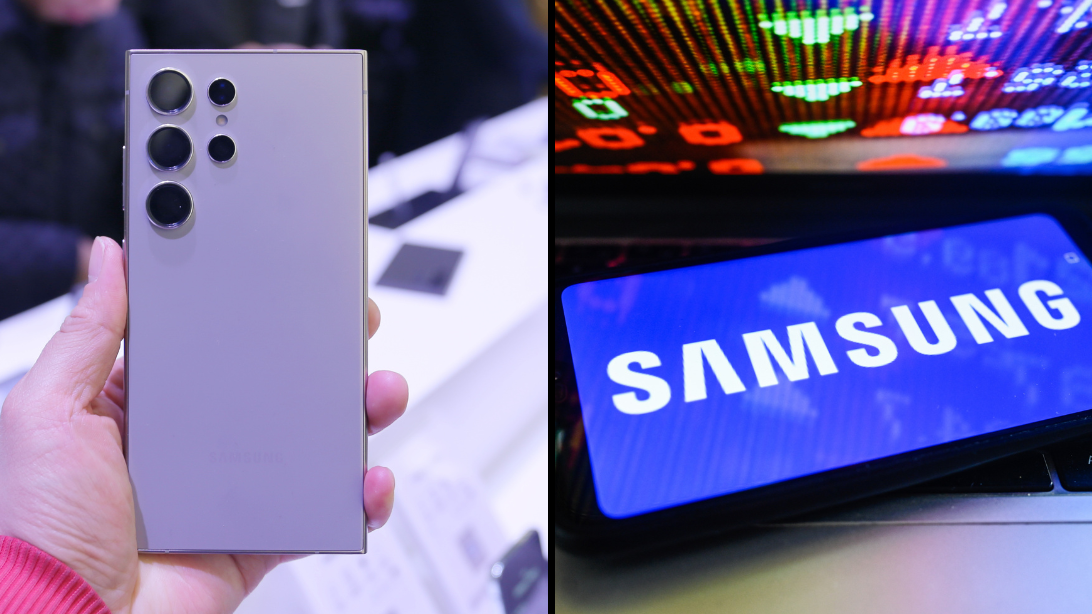Samsung has issued an urgent warning to millions of Galaxy smartphone users worldwide. The tech giant is urging users to update their devices immediately to protect against a newly discovered security vulnerability that could potentially expose users to a wide range of cyber threats. This critical update comes in response to a sophisticated attack vector that security experts warn could have devastating consequences if left unaddressed.
The Threat Landscape: A Digital Powder Keg
The vulnerability, dubbed “GalaxyGate” by cybersecurity researchers, affects a wide range of Samsung Galaxy models, including popular flagship devices like the S series, Note series, and even some A series models. According to Samsung’s official statement, the flaw resides in the device’s kernel, the core program at the heart of the operating system that has unrestricted access to all system resources.
Dr. Elena Rodriguez, a leading cybersecurity expert at CyberShield Institute, explains the severity of the situation: “This kernel-level vulnerability is particularly dangerous because it potentially gives attackers root access to the device. With this level of access, malicious actors could do everything from stealing sensitive data to installing undetectable malware.”
The discovery of GalaxyGate has put millions of Samsung users at risk, with estimates suggesting that over 100 million devices worldwide could be vulnerable to exploitation. This staggering number underscores the urgency of Samsung’s call for immediate action.
The Anatomy of GalaxyGate: A Technical Breakdown
While Samsung has been tight-lipped about the specific details of the vulnerability to prevent further exploitation, cybersecurity firms have been working around the clock to understand the nature of the threat. According to a report from TechGuard Solutions, GalaxyGate appears to be a combination of a use-after-free vulnerability and a timing attack that targets the Galaxy device’s memory management system.
John Chen, Chief Technology Officer at TechGuard Solutions, provides insight into the complex nature of the exploit: “What makes GalaxyGate particularly insidious is its multi-stage attack process. The initial exploit takes advantage of a flaw in how the device handles certain system calls. Once this beachhead is established, the attacker can then exploit race conditions in the memory allocation process to elevate privileges and gain kernel-level access.”
The potential consequences of a successful GalaxyGate attack are dire. With root access, attackers could:
- Exfiltrate sensitive data, including passwords, financial information, and personal photos
- Install keyloggers to capture every keystroke made on the device
- Turn on cameras and microphones remotely, effectively turning the phone into a surveillance device
- Use the compromised device as a launchpad for attacks on other devices or networks
- Modify system settings to persist across reboots and factory resets

Samsung’s Response: A Race Against Time
In response to the discovery of GalaxyGate, Samsung has mobilized its entire security team to develop and distribute a patch as quickly as possible. The company has been working in close collaboration with Google’s Android security team and independent security researchers to ensure a comprehensive fix.
Samsung’s official statement reads in part: “We take the security of our users extremely seriously. Our teams have been working tirelessly to develop a security update that addresses this vulnerability. We urge all Galaxy users to update their devices as soon as the patch becomes available in their region.”
The update, which is being rolled out in phases to prevent overwhelming update servers, includes not only a fix for GalaxyGate but also additional security enhancements to fortify Galaxy devices against future threats.
The Update Process: A Step-by-Step Guide
To help users protect their devices, Samsung has provided a detailed guide on how to check for and install the critical security update:
- Open the Settings app on your Galaxy device
- Scroll down and tap on “Software update”
- Tap “Download and install”
- If an update is available, follow the on-screen instructions to download and install it
- Ensure your device is connected to a stable Wi-Fi network and has at least 50% battery life before initiating the update
Samsung is also encouraging users to enable automatic updates to ensure their devices receive future security patches promptly.
The Wider Implications: A Wake-Up Call for Mobile Security
The discovery of GalaxyGate has implications that extend far beyond Samsung and its user base. It serves as a stark reminder of the ever-present threats in the digital landscape and the critical importance of robust mobile security measures.
Dr. Sarah Thompson, a professor of Cybersecurity at MIT, comments on the broader significance of this incident: “GalaxyGate is a wake-up call not just for Samsung users, but for the entire mobile industry. It highlights the need for more proactive security measures, including more frequent security audits and perhaps a rethinking of how we approach kernel-level access in mobile operating systems.”
The incident has also reignited debates about the security of Android devices compared to their iOS counterparts. While iOS has its own share of vulnerabilities, the fragmented nature of the Android ecosystem—with multiple manufacturers each maintaining their own versions of the operating system—can sometimes lead to delayed patches and inconsistent security levels across devices.
User Vigilance: The First Line of Defense
While Samsung works to distribute the critical update, security experts are emphasizing the importance of user vigilance in protecting against potential exploits. Here are some additional steps Galaxy users can take to enhance their security:
- Be cautious of suspicious links and attachments: GalaxyGate requires some level of user interaction to initiate. Avoid clicking on links or downloading attachments from unknown sources.
- Keep all apps updated: Ensure all installed apps are up to date, as outdated apps can sometimes be used as attack vectors.
- Use a reputable mobile security app: Consider installing a trusted antivirus app for an additional layer of protection.
- Be wary of public Wi-Fi: Avoid connecting to unsecured public Wi-Fi networks, which can be used to launch man-in-the-middle attacks.
- Enable two-factor authentication: Use 2FA wherever possible, especially for sensitive accounts like email and banking apps.
- Regularly back up your data: In the event of a successful attack, having a recent backup can be crucial for data recovery.
The Road Ahead: Lessons Learned and Future Preparedness
As Samsung races to patch GalaxyGate and users scramble to update their devices, the incident has sparked discussions about how to prevent similar vulnerabilities in the future. Samsung has announced plans to overhaul its security development lifecycle, including more rigorous code reviews and an expanded bug bounty program to incentivize the discovery of potential vulnerabilities before they can be exploited.
Industry analysts are calling for greater collaboration between device manufacturers, operating system developers, and third-party security firms to create a more robust ecosystem of mobile security. Some are even suggesting the development of an industry-wide rapid response system for critical vulnerabilities, similar to those used in other sectors like aviation and finance.
A Crucial Moment for Mobile Security
The GalaxyGate vulnerability represents a critical juncture in the ongoing battle for mobile security. As our smartphones continue to become increasingly central to our personal and professional lives, the stakes for protecting these devices have never been higher.
For the millions of Samsung Galaxy users worldwide, the message is clear: update your devices immediately. But beyond this immediate threat, GalaxyGate serves as a powerful reminder of the importance of staying vigilant and proactive about digital security in an increasingly connected world.
As we move forward, the lessons learned from this incident will undoubtedly shape the future of mobile security. For now, the focus remains on patching this critical vulnerability and ensuring that millions of Galaxy users can once again use their devices with confidence.
In the ever-evolving landscape of cybersecurity, one thing remains constant: the need for users, manufacturers, and security experts to work together to stay one step ahead of those who would exploit our digital vulnerabilities. The battle against GalaxyGate is just the latest skirmish in this ongoing war—a war that, for the sake of our digital future, we cannot afford to lose.
















Add Comment